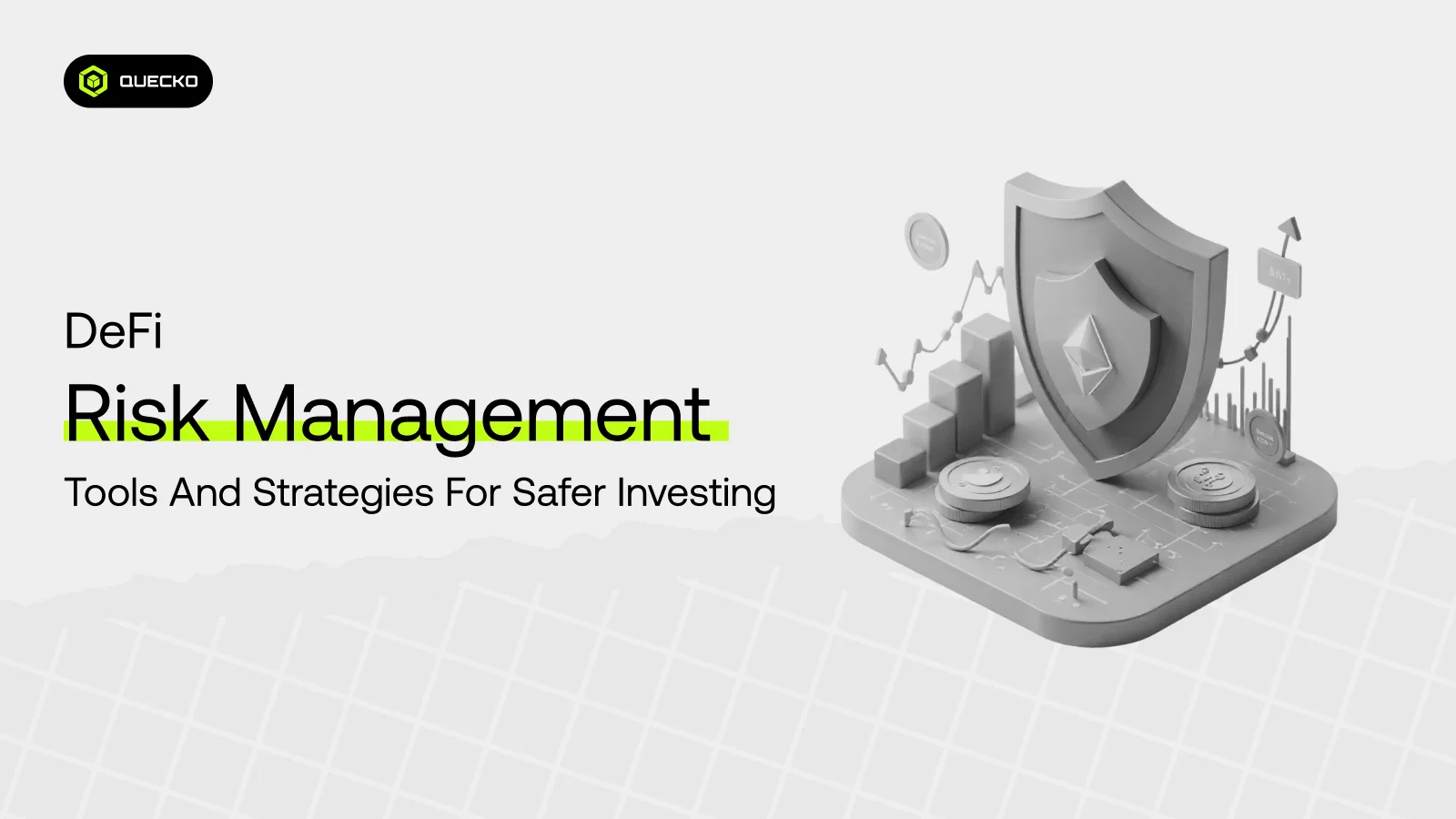The Future of Web3 UX Is Here: AI Meets Cross-Chain Wallets
Discover how cross-chain wallets and AI integration are transforming the cryptocurrency user experience. Learn about enhanced security, seamless interoperability, and personalized financial management in this comprehensive guide.
Why Does This Matter?
The crypto world is evolving fast. At the heart of this shift are cross-chain wallets powered by AI tools that don’t just make crypto more usable, but fundamentally change how users interact with decentralized systems. These innovations combine automation, intelligence, and security to create smarter, more seamless experiences for both new users and seasoned Web3 explorers.
Cross-Chain Wallets: A New UX Foundation
Cross-chain wallets let users store, manage, and transfer multiple cryptocurrencies across different blockchains through a single platform. By bringing assets from networks like Ethereum, Bitcoin, BSC, and Solana under one roof, they remove the hassle of juggling multiple apps and accounts.
Beyond basic storage, they secure private keys, support smart contract interactions, and allow users to stake, lend, or transact across both public and private chains. Built-in analytics, portfolio tools, and automated swaps make managing assets much more efficient. Essentially, they act as the backbone of blockchain interoperability, streamlining the multi-chain experience while maintaining security and transparency.
Key Features That Make Cross-Chain Wallets Stand Out
1. Multi-Asset Support
Users can manage multiple cryptocurrencies from one secure place, eliminating the need for separate wallets. This unified view makes tracking, trading, and transferring assets across different blockchains simpler. Many wallets also support smart contract execution across chains, enabling automated agreements and cross-network transfers.
2. Seamless Transactions
Cross-chain wallets use bridges and automated routing to move assets between blockchains quickly and securely. This reduces gas fees, minimizes delays, and removes the need for manual transfers making interoperability feel effortless.
3. Bridge Infrastructure
Cross-chain bridges connect independent blockchains so data and assets can move securely between them. Using smart contracts and validation protocols, they ensure trust, transparency, and cost efficiency. Blockchain’s immutable ledger underpins these bridges, guaranteeing safe and transparent transfers without intermediaries.
4. Easier Access to dApps
From a single wallet, users can connect to a wide range of decentralized apps and blockchain services. This unified access improves usability, reduces friction, and lets even beginners engage with multiple networks seamlessly.
5. Centralized Interface
Users can track balances, monitor transactions, and manage staking or yield farming all in one place. This creates a smoother, more accessible experience especially for people exploring DeFi for the first time.
AI Enters the Wallet: Smarter Interactions Ahead
Artificial intelligence is taking crypto wallets to the next level. By learning from user behavior, AI-powered wallets automate complex tasks like token swaps, yield farming, and governance voting. Machine learning allows these systems to adapt over time, offering smoother integrations with decentralized apps and more personalized user experiences.
This isn’t just about convenience it’s about turning wallets into intelligent hubs that work for the user, not the other way around.
Advanced AI Features You’ll See in Wallets
-
Automated Trading & Portfolio Management
AI can execute trades on your behalf, based on predefined rules or market signals. This makes portfolio optimization a hands-off process, operating 24/7 across multiple blockchains.
-
Real-Time Security Monitoring
AI continuously scans transactions for suspicious activity. If something looks off, smart contracts can automatically block or reverse transactions adding a powerful layer of fraud protection.
-
NLP-Powered Interactions
Natural language processing (NLP) allows users to talk to their wallets via chat or voice commands. Whether you’re checking balances, swapping tokens, or setting rules, it’s as simple as giving an instruction.
The Synergy: AI x Cross-Chain
When you combine cross-chain tech with AI, the result is a powerful, intelligent ecosystem. Wallets can route transactions intelligently across networks, optimizing for speed, cost, and security. AI can predict gas fees and network congestion, executing transfers at the most efficient times.
Advanced privacy tools like zero-knowledge proofs allow users to validate transactions without exposing sensitive data. Meanwhile, compatibility with EVM-based networks expands interoperability even further. Together, these elements make wallets adaptive, secure, and user-friendly a major leap forward for Web3 UX.
Benefits of AI-Powered Cross-Chain Wallets
- Optimized Transaction Routing: AI analyzes networks in real time to find the cheapest, fastest transaction paths, lowering gas costs and latency.
- Personalized Investment Strategies: Based on user preferences and risk levels, AI suggests strategies and automates portfolio adjustments via smart contracts.
- Strengthened Security: Real-time monitoring, biometric authentication, and encryption work together to protect user assets.
- Seamless User Experience: Complex tasks like cross-chain swaps or staking are simplified, making advanced blockchain actions feel intuitive.
Real-World Examples
Several projects are already building on this AI + cross-chain vision:
- NEAR Protocol is connecting AI and crypto to solve UX challenges. By automating multi-chain operations through smart contracts, it makes blockchain interaction more approachable.
- ChainGPT integrates AI directly into blockchain networks, allowing smart contracts to respond dynamically to real-time data.
- Omnichain Web focuses on liquidity management and chain abstraction, using AI agents to automate complex cross-chain operations with lower gas fees.
These examples highlight a growing ecosystem where wallets aren’t just tools they’re intelligent platforms for interacting with Web3.
Key Challenges to Watch
While promising, this evolution isn’t without its hurdles:
- Security Risks: Complex AI algorithms and cross-chain protocols need robust safeguards to avoid new vulnerabilities.
- Reliability: Ensuring smooth communication between public blockchains and AI systems is essential for transparency.
- Regulatory Compliance: As these technologies spread, navigating legal frameworks and educating users will be critical to adoption.
Looking Ahead: What’s Next for Crypto Wallets
The future of AI-powered cross-chain wallets looks bright. We can expect:
- Advanced AI Agents making autonomous investment and governance decisions.
- Next-Gen Cross-Chain Protocols improving scalability, speed, and security.
- Deeper Integration with Traditional Finance, allowing users to manage both digital and fiat assets from one platform.
This convergence will make managing digital wealth simpler, smarter, and more secure than ever before.
Final Thoughts
The fusion of AI and cross-chain wallets is reshaping Web3 UX from the ground up. These smart wallets are delivering stronger security, more personalized experiences, and seamless interoperability while giving users full control over their assets.
As the technology matures, expect crypto wallets to become the intelligent gateways to the decentralized internet. The future isn’t just multi-chain; it’s smart, adaptive, and user-centric.
Date
4 days agoShare on
Related Blogs

The Future of Web3 UX Is Here: AI Meets Cross-Chain Wallets
4 days ago

Why Regulation Could Be Blockchain Marketing’s Secret Weapon
5 days ago

DeFi Risk Management: Tools and Strategies for Safer Investing
7 days ago

The Rise of Layer-2 Gaming Economies: Faster, Cheaper
11 days ago







